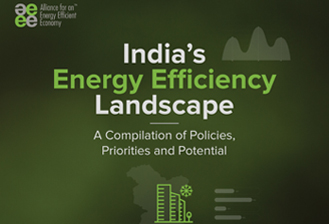The Industrial activities such as manufacturing and construction is responsible for approximately one-fourth of India’s total GHG emissions. The construction industry is one of the largest consumers of cement and steel and accounts for more than 65% of cement and 40% of steel demand of India. The steel and cement being the fundamental material in today’s construction, is responsible for 12% of total GHG emissions. Hence, there is an immediate need to cut down these emissions by switching to low embodied carbon options to be on track with the Paris Agreement. Moreover, the MSME segment is equally important and is considered as the backbone of Indian economy in terms of its contribution to GDP, employment generation, and export revenues. The MSMEs continue to use obsolete, and low efficiency technologies and therefore the energy cost is as high as 50% of total manufacturing cost in some cases. Hence, there is a need for accelerated adoption of energy efficiency and clean technologies for reducing emissions as well as improving the profitability and competitiveness of MSMEs.
The Low Carbon Technologies and Solutions team aims to accelerate decarbonization of focused industry sectors through scaling up energy efficient technologies, promoting data-enabled energy management systems, switch to clean fuels, innovative technologies, and material efficiency interventions. Our main goal is to complement these strategies with adequate policies & regulations, business models & innovative financing, market instruments, partnerships & collaborations, and pilot demonstrations.
Strategic focus area
- Mainstream ESCO options and viable financing
- Accelerate the adoption of cross-sectoral scalable solutions
- Decarbonization of MSMEs
- Third party monitoring and verification service

Flagship project
Reducing Cement Sector Emissions
There is a need to study the feasibility of alternate low-carbon material options, substituting materials, and design & construction optimization strategies in the Indian construction industry. There is also a need for development of standards, creating awareness among the user community for quicker adoption, and creating an ecosystem for the faster replication. This report discusses several possible measures to mitigate the emissions from the Indian cement industry.
Must Read
Emission Reduction Approaches for the Cement Industry
India’s journey towards becoming a robust economy is largely dependent on the growth of its industrial sector, with cement being the most produced commodity in it. In India, the major cement consuming sectors include: housing and real estate (65%), infrastructure (25%), and commercial and industrial development (10%).

